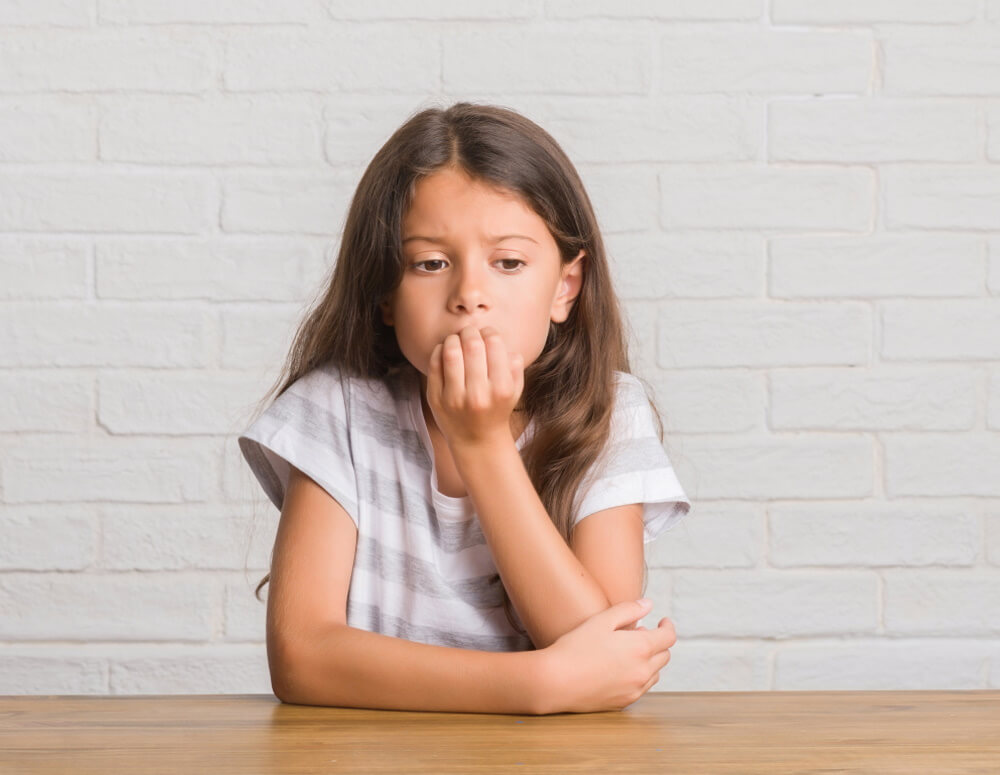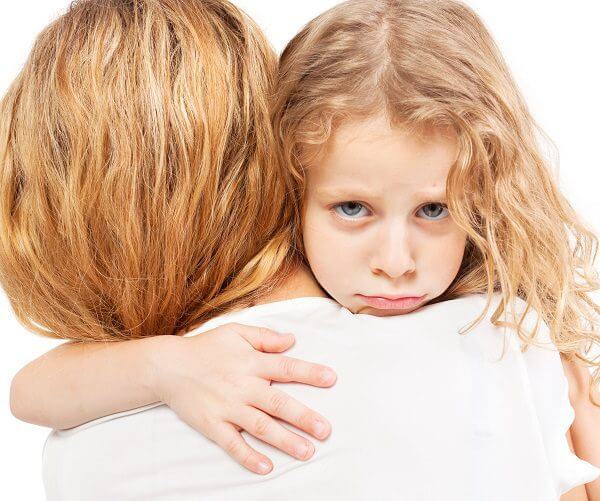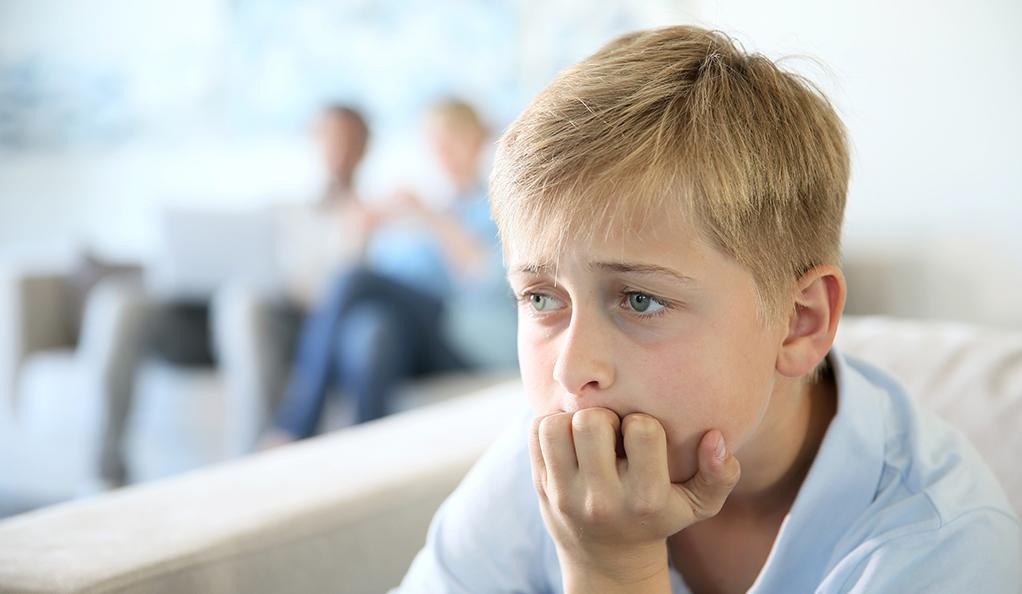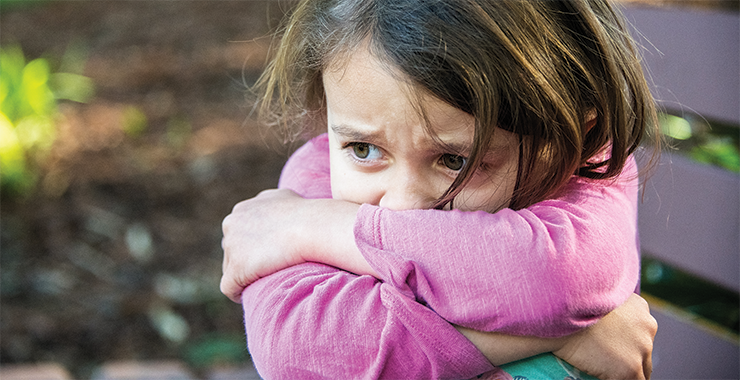Just imagine, Sunday night, your eight-year-old is in bed with tears running down his or her face saying, “my stomach hurts in the worried way.” They are catastrophizing their math test on Monday that they believe they will fail even though they studied over the weekend. It hurts your heart to see your little angel struggling with some unseen demons that are very real to him or her. The message here is that you are not alone in this journey, and more importantly, light at the end of the tunnel.
Having an anxious child in the house is like trying to make your way through a maze wearing a blindfold as each corner you turn, you have an additional worry and what-if situation that appears to be growing like dandelions in the spring rain. However, this is what I need you to understand: anxiety among children is not a character trait, a weakness, and a reflection of your inadequacy as a parent. It is an ordinary experience that impacted millions of families, and with the proper knowledge and instruments, you can make your child not only survive but succeed.
These statistics give a clear account of how rife anxiety in children has become. Current, diagnosed anxiety was found in 11 percent of children 3-17 and the rates are increasing year to year. Prior to the pandemic, anxiety and depression was on the rise in children and adolescents, rising by 27 percent and 24 percent respectively between 2016 and 2019. These statistics do not aim to frighten you but to normalize whatever you may be going through at home
Understanding The Anxious Child: When Worry Becomes Overwhelming

Every child experiences worry from time to time – it’s as natural as scraped knees and bedtime stories. But for some children, worry transforms from an occasional visitor into a demanding houseguest that never seems to leave. The anxious child experiences fears and concerns that feel disproportionate to the actual situation, creating a cycle where their minds become like snow globes that never settle.
Think about the last time you felt really anxious – maybe before a job interview or medical appointment. Remember that flutter in your chest, the racing thoughts, the way your body felt keyed up and ready for danger? Now imagine experiencing that intensity over everyday situations like going to school, trying new foods, or meeting new people. That’s the world many anxious children navigate daily.
Anxiety in children can manifest in countless ways, and it rarely looks like the Hollywood version of panic attacks (though those can certainly happen too). Sometimes it’s the child who suddenly can’t sleep in their own bed after years of independence. Other times it’s the perfectionist who melts down over a single wrong answer on homework, or the social butterfly who suddenly refuses playdates and birthday parties.
Physical symptoms often accompany the emotional turmoil: stomachaches that vanish once they’re allowed to stay home from school, headaches that appear before social events, or that tight feeling in their chest when facing something new. These aren’t “fake” symptoms – anxiety creates very real physical sensations that can be just as distressing as any illness.
The Science Behind Little Worriers: What Research Tells Us
Understanding the “why” behind childhood anxiety can be incredibly empowering for parents. Research shows us that anxiety often has multiple contributing factors working together like instruments in an orchestra – sometimes harmoniously, sometimes creating quite a cacophony.
Genetics play a significant role, but they’re not destiny. Children of anxious parents are at heightened risk of developing an anxiety disorder of their own, but promising research indicates that targeting parenting behaviours can reduce the risk of intergenerational transmission of anxiety. This doesn’t mean anxious parents are doomed to raise anxious children – it means awareness and intentional strategies can make a tremendous difference.
Brain development also factors into the equation. The part of the brain responsible for executive functioning and emotional regulation – the prefrontal cortex – isn’t fully developed until the mid-twenties. Meanwhile, the amygdala (our brain’s alarm system) is fully operational from early childhood. It’s like having a state-of-the-art security system with a hair trigger, but the central command center is still under construction.
Environmental factors matter too. Major life changes, traumatic experiences, family stress, school pressures, and even positive events can sometimes trigger anxiety in sensitive children. The key is understanding that multiple factors often converge to create the perfect storm, and no single cause is to blame.
How to Help an Anxious Child: Building Your Toolkit
When your child is struggling with anxiety, your instinct might be to swoop in and remove every potential stressor from their path. It’s like wanting to build a bubble around them where nothing scary or uncomfortable can reach. While this impulse comes from pure love, research shows us that avoidance often feeds anxiety rather than starving it.

The most effective approach involves helping your child develop coping skills while gradually facing their fears in manageable doses. There are currently two evidence-based treatments for anxiety—medication and cognitive behavioral therapy, but parents can incorporate many therapeutic principles into daily life.
Validation Before Solutions
Before diving into problem-solving mode, start with validation. When your child expresses worry, resist the urge to immediately reassure them that everything will be fine. Instead, try something like: “That sounds really scary. Tell me more about what’s worrying you.” This approach helps your child feel heard and understood before you work together on solutions.
The Power of Routine and Predictability
Anxious children often crave structure like plants crave sunlight. Creating predictable routines helps their nervous systems feel safer and more regulated. This doesn’t mean rigid scheduling, but rather having consistent patterns around meals, bedtime, and daily transitions that serve as anchors in their day.
Teaching the Language of Feelings
Help your child develop an emotional vocabulary that goes beyond “good,” “bad,” and “scared.” Create a feelings chart together, practice identifying emotions in storybook characters, and model naming your own feelings throughout the day. When children can accurately identify what they’re experiencing, they’re better equipped to manage those emotions.
Parenting an Anxious Child: Strategies That Actually Work
Parenting an anxious child requires a delicate balance – like being a gentle coach who believes in their player’s ability to succeed while also understanding their current limitations. The goal isn’t to eliminate anxiety entirely (which isn’t possible or even desirable), but to help your child develop a healthy relationship with worry and uncertainty.
The Worry Time Technique
Set aside 10-15 minutes each day as designated “worry time.” During this period, your child can share all their concerns while you listen without judgment. Outside of worry time, when anxious thoughts arise, you can say, “That sounds like a worry for worry time. Let’s write it down so we don’t forget.” This technique helps contain anxiety rather than letting it sprawl across the entire day.
Gradual Exposure with Lots of Support
Think of facing fears like learning to swim – you don’t throw someone into the deep end and hope for the best. Instead, you start in shallow water, offer support, and gradually build confidence. If your child is afraid of dogs, you might start by looking at pictures of friendly dogs, then watching dogs from across the street, then eventually (with lots of preparation and support) petting a calm, gentle dog.
Breathing and Grounding Techniques
Teach your child simple breathing exercises that they can use when anxiety strikes. The “smell the flower, blow out the candle” technique works well for younger children – have them imagine smelling a beautiful flower (deep breath in) and then blowing out birthday candles (slow breath out). For older children, try the 4-7-8 technique: breathe in for 4 counts, hold for 7, and exhale for 8.
Grounding techniques help bring anxious children back to the present moment. The 5-4-3-2-1 technique involves identifying 5 things they can see, 4 things they can touch, 3 things they can hear, 2 things they can smell, and 1 thing they can taste.
The Empathic Parent’s Guide to Raising an Anxious Child: Leading with Love
Being the empathic parent’s guide to raising an anxious child means recognizing that your own emotional regulation becomes a cornerstone of your child’s healing journey. Children are like emotional sponges, absorbing the energy and emotions around them. When you can remain calm in the storm of their anxiety, you become their safe harbor.
Managing Your Own Anxiety
If you struggle with anxiety yourself, addressing your own mental health isn’t selfish – it’s essential. Parent-only interventions were found to be effective, compared to controls, meaning that when parents learn anxiety management skills, their children benefit even without direct intervention.
Consider this: every time you model healthy coping strategies, you’re making deposits in your child’s emotional bank account. When you take deep breaths during stressful moments, practice self-compassion after making mistakes, or seek support when you need it, you’re showing your child that managing difficult emotions is possible and normal.
The Art of Supportive Listening
Sometimes the most powerful thing you can offer your anxious child is your presence and attention. Create regular opportunities for connection without distractions – car rides, bedtime chats, or quiet moments before dinner can become sacred spaces for sharing.
When your child opens up about their worries, resist the urge to immediately offer solutions or reassurance. Instead, practice reflective listening: “It sounds like you’re really worried about the science project. That must feel overwhelming.” Often, children need to feel heard and understood before they’re ready to problem-solve.
Building Confidence Through Small Wins
Look for opportunities to help your child experience success in managing anxiety. Maybe they practice their breathing technique during a mildly stressful situation, or they choose to attend a birthday party despite feeling nervous. Celebrate these moments – not with over-the-top praise that might feel overwhelming, but with genuine acknowledgment of their courage.
Create a “brave moments” journal where you document times your child faced fears or tried something new. During difficult days, you can look back at these entries together as reminders of their strength and resilience.
Common Anxiety Triggers and How to Navigate Them
Understanding your child’s specific anxiety triggers is like having a roadmap through challenging terrain. While each child is unique, certain situations tend to spark worry in many anxious children.
School-Related Anxiety
School anxiety can manifest in various ways: fear of academic failure, social worries, separation anxiety, or concerns about specific situations like presentations or group work. Work collaboratively with your child’s teacher to create a support plan. This might include having a designated safe person they can talk to, a quiet space to retreat when overwhelmed, or modified expectations during particularly stressful periods.
Practice school scenarios at home through role-play. If your child worries about raising their hand in class, practice at the dinner table. If they’re anxious about eating lunch alone, brainstorm strategies for finding friendly faces in the cafeteria.
Social Situations and Friendships
Social anxiety can be particularly challenging because peer relationships become increasingly important as children grow. Help your child develop social skills through low-pressure situations – perhaps inviting one friend over for a structured activity rather than expecting them to navigate large group gatherings.
Teach your child conversation starters and help them identify shared interests with peers. Sometimes anxious children worry they won’t know what to talk about, so having a mental toolkit of topics can boost their confidence.

Perfectionism and Performance Anxiety
Many anxious children are also perfectionists, creating additional pressure in academic and extracurricular activities. Help your child understand that mistakes are not only normal but necessary for learning and growth.
Share your own mistakes and what you learned from them. Create family mottos like “Progress, not perfection” or “Mistakes help our brains grow.” When your child makes an error, respond with curiosity rather than criticism: “What did you learn from that? What might you do differently next time?”
Building Resilience: Long-Term Strategies for Success
The ultimate goal in supporting an anxious child isn’t to eliminate all worry – it’s to help them develop resilience and coping skills that will serve them throughout life. Think of it as teaching them to dance in the rain rather than waiting for the storm to pass.
Developing a Growth Mindset
Help your child understand that feelings, including anxiety, are temporary visitors rather than permanent residents. Use language that emphasizes growth and change: “Right now you’re feeling worried about the test” rather than “You’re an anxious person.”
Celebrate effort over outcome. When your child tries something challenging, regardless of the result, acknowledge their courage: “I noticed you felt nervous about the presentation, but you did it anyway. That took real bravery.”
Creating a Support Network
No parent should navigate childhood anxiety alone, and neither should your child. Help them identify trusted adults beyond yourself – perhaps a favorite teacher, coach, relative, or family friend who can provide additional support and perspective.
Consider connecting with other families who understand the challenges of raising anxious children. Support groups, online communities, or even informal friendships with parents facing similar struggles can provide invaluable encouragement and practical tips.
Professional Support When Needed
While many children benefit from the strategies outlined in this article, some may need additional professional support. Trust your instincts about when to seek help. Generally, consider professional intervention if anxiety significantly interferes with your child’s daily functioning, relationships, or development.
Therapists trained in working with anxious children can provide specialized techniques like cognitive-behavioral therapy (CBT), which has strong research support for treating childhood anxiety. Remember, seeking professional help isn’t an admission of failure – it’s an act of love and advocacy for your child.
The Technology Factor: Screens, Social Media, and Modern Anxiety
Today’s children face anxiety triggers that previous generations never encountered. Social media, constant connectivity, and information overload can amplify anxious tendencies in sensitive children. While technology isn’t inherently evil, it requires thoughtful management.
Create tech-free zones and times in your home, especially around meals and bedtime. The hour before sleep should be particularly screen-free, as the blue light from devices can interfere with the natural production of melatonin, making it harder for anxious minds to settle.
Teach your child to be a critical consumer of information. Help them understand that social media often presents highlight reels rather than reality, and that news media tends to focus on dramatic or scary stories because they capture attention.
Monitor your child’s online interactions without being overly intrusive. Look for signs that technology use is increasing rather than decreasing anxiety, and adjust accordingly.
Self-Care for Parents: You Can’t Pour from an Empty Cup
Parenting an anxious child can be emotionally and physically exhausting. You might find yourself walking on eggshells, constantly worried about triggering your child’s anxiety, or feeling guilty when you need a break. This is completely normal and understandable.
Remember that taking care of yourself isn’t selfish – it’s essential. When you’re emotionally regulated and physically rested, you’re better equipped to support your child through difficult moments. Make self-care a priority, even if it’s just five minutes of deep breathing or a quick walk around the block.
Connect with other parents who understand your experience. Join online support groups, attend local meetups, or simply reach out to friends and family members who can offer encouragement and practical support.
Consider your own therapy if childhood anxiety is triggering your own anxiety or bringing up difficult memories from your past. Many parents find that addressing their own emotional health significantly improves their ability to support their anxious child.
Celebrating Small Victories and Finding Joy
In the midst of managing childhood anxiety, it’s easy to focus solely on the challenges and forget to celebrate progress. Make a conscious effort to notice and acknowledge small victories – the day your child tried a new food despite feeling nervous, the time they used their breathing technique instead of having a meltdown, or the moment they chose to attend a social event they initially wanted to avoid.
Create traditions and rituals that bring joy and lightness to your family life. Maybe it’s weekly game nights, monthly adventure outings, or daily gratitude sharing at dinner. These positive experiences help balance the weight of anxiety management and remind your child (and you) that life contains much more than worry.
Look for your child’s unique strengths and interests, and nurture them enthusiastically. Often, anxious children have wonderful qualities like empathy, creativity, attention to detail, and deep thinking. Helping them recognize and develop their gifts builds confidence and provides a foundation of positive self-identity.
Moving Forward with Hope and Confidence

As we come to the end of this journey together, I would like you to know that, having an anxious child is not a burden you carry without any help. Yes, you will have bad days, when anxiety appears to be the ultimate control, when it takes two hours to put your child to bed rather than half an hour, or when your little one appears to be worried about something to the point of not being able to think of anything but what troubles her. Yet there will be victories, and there will be improvement, and there will be indications that your love and support are actually paying off.
The way ahead is not to have a worry-free childhood which (fortunately) does not and (fortunately) would not be desirable. Rather it is about supporting your child in building the resources, confidence, and support network they require to face the uncertainties of life with boldness and poise.
Keep in mind that each anxiety case of a child is different. What may work with one child may not work with another and what works at one stage of development may have to be modified as your child develops. Remain open-minded, go with your gut feeling, and do not be afraid to consult a professional when you require it.
The love, patience and the desire to understand the experience of your child are strong healing and growing forces.When you apply the strategies we discussed together, validation, gradual exposure, routine, emotional education, and your own self-care, you are covering your child with gifts that will last a lifetime.
The fearful child in bed on Sunday night fearing Monday math test could develop into a strong adult who goes through difficult situations with grace and wisdom. The work you are doing in guiding, advocating and serving as a safe harbor to them during these formative years is setting the stage of that transformation. Believe in the process, enjoy the small wins, and do not forget that every step you take no matter how small it is should be celebrated.
You are not only raising an anxious child now; you are raising a courageous heart that will one day support other people to seek their own courage when life becomes uncertain.



